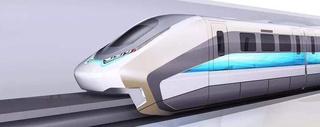Abandoned Maglev Projects
We have collected the most famous Maglev lines in the world that have either came to a halt or never seen the daylight. In all cases the number one reason was the high cost, but the stories are very different. One Swiss project and three from the home of Transrapid, Germany.

Swissmetro
This project has been abandoned because the Swissmetro would require a considerable amount of its 24 billion Franc cost to come from public money. However, the current government is unwilling to release the funds because they can’t for the life of them see how they are going to get their money back. The returns available to the Swiss government are the indirect profits resulting from reduced pollution, increased tourism and fewer accidents.
The original vision of the Swissmetro was to turn Switzerland into one metropolis by making it possible to travel to any major city in the country within 15 minutes.
The plan was to build an underground network of tunnels 50 - 100 meters below ground level. The tunnels would have air extracted creating a semi-vacuum reducing air-resistance and allowing the trains to reach speeds of 500 kmph.

Passengers would be delivered onto the trains via extending pressurized walkways and the trains were to carry 200-800 people and run every ten minutes.
While in the platform, the trains could be rotated like bullets in a six-shooter to allow access to different tunnels taking the passengers in different directions. The ambitious plan included ideas of expanding the system to cover key cities all over mainland Europe.

Münich Maglev
Plans to build a 38km long maglev railway connecting Munich Airport and the city centre were abandoned in 2008 after costs swelled from $2.90 billion to $5.33 billion. The German government had agreed to pay half the initial estimate but refused to gratify the new figures.

The project was set to use a brand new model of maglev train, the Transrapid 09 and feature a new guideway girder dubbed the "Munich Girder". The line would have reached a top speed of 350km/h and delivered people from the airport to the centre of Munich in 10 minutes. Much faster than the current S-Bahn trains that have been criticized for being too slow taking 40 minutes to complete the journey.
Münich Maglev video

Hamburg-Berlin Maglev
This 295km track was envisioned to take passengers between Hamberg and Berlin in 55 minutes traveling at speeds of 450km/h. The project was given the green light in 1994 and it was hoped to be operational by 2005. The line was to use a hybrid of maglev technology to accelerate the train and a linear electric motor on the track and the train to maintain the speed.
Despite projected of annual profits of $560 million the project was abandoned in 2000 in favor of upgrading the current line to accommodate speeds of 230km/h at a cost of $600 million. This was considerably less then the $5.77 billion it would have taken to build the proposed maglev connection.

Metrorapid
The Metrorapid would have seen maglev trains speeding between Dusseldorf and Dortmund but was abandoned in 2003. The scheme was heavily criticized for its high cost ($3.6 billion) and inefficiency.
While the track would be capable of hosting speeds over 300km/h critics pointed out that the train would actually average only 128km/h because of the seven station stops en route. They claimed that this meant the maglev train would only be eight minutes faster than if they extended the current high-speed ICE rail link.
The current ICE trains link Brussels with many German cities and have a top speed of 300km/h. They will take you from Brussels to Frankfurt in three hours.
Metrorapid planned to carry 37 million passengers per year using a track close to 80km long traversing 16.4km of tunnels. Nine bridges would have had to be built which raised opposition from environmental groups keen to protect the historic and picturesque Rhineland region. These protests were the final nails in the coffin for the proposition.
Abandoned train photo by Brayndayn





